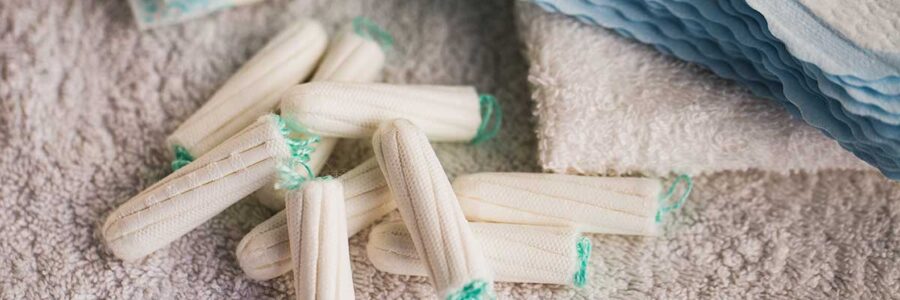The discourse surrounding menstrual health and hygiene has significantly evolved, extending its focus to encompass menstrual products’ safety and compositional integrity. A pivotal concern that has emerged within this dialogue is the detection of glyphosate, a prevalent herbicide, within feminine hygiene products. Given its widespread application, notably in products like Roundup, and its status as the most extensively utilized herbicide in the United States and globally, glyphosate’s presence in products closely associated with women’s health has ignited substantial debate and concern.
Understanding Glyphosate: The Pervasive Herbicide
Glyphosate’s role as a potent herbicidal agent, efficacious against a broad spectrum of vegetation, has cemented its dominance in agricultural and urban management. However, its omnipresence has prompted apprehensions regarding its potential repercussions on human health and ecological well-being.
Health Risks Associated with Glyphosate
The core of the controversy surrounding glyphosate lies in research suggesting its carcinogenic potential and other detrimental health impacts. The International Agency for Research on Cancer (IARC), under the World Health Organization (WHO), has categorized glyphosate as “probably carcinogenic in humans,” a classification derived from both human exposure instances and animal studies, sparking intense debates over the safety and regulatory measures for glyphosate-infused products.
The Presence of Glyphosate in Menstrual Hygiene Products
Investigations and studies have unearthed glyphosate traces in diverse menstrual hygiene products, including tampons and sanitary pads. This revelation is particularly alarming due to the intimate use of these products, raising concerns about the potential for harmful substances to be absorbed into the body and disrupt the vaginal microbiome.
Implications for Women’s Health
The detection of glyphosate in menstrual products poses significant health risks, particularly in the realm of reproductive health. Although the full extent of glyphosate exposure through these products remains under investigation, the potential for long-term health effects, given its established harm to other bodily systems like the gut microbiome, is a matter of grave concern.
The Quest for Non-Toxic Alternatives
In light of the growing apprehensions regarding glyphosate and other harmful substances in menstrual products, a shift towards health-conscious alternatives has gained momentum. The market now offers a variety of safer options that emphasize organic materials, transparency, and environmental sustainability, providing not only peace of mind but also a potential enhancement in health and ecological impact.
Popular Health-Conscious Menstrual Products
- Organic Cotton Products: These are crafted without employing pesticides, herbicides, and other noxious chemicals, making them a preferred choice for those looking to steer clear of glyphosate and other toxins.
- Menstrual Cups: Constructed from medical-grade silicone, latex, or thermoplastic elastomer (TPE), these reusable alternatives offer a sustainable choice, reducing waste and chemical exposure.
- Cloth Pads: Made from organic cotton or other natural fibers, reusable cloth pads present an eco-friendly and toxin-free alternative to disposable pads.
- Period Underwear: Designed for use without additional menstrual products, these underwear incorporate absorbent materials and often utilize organic and natural fibers, free from harmful chemicals like PFAs.
Selecting Safe Menstrual Products
Discerning the safer options involves more than skimming through labels and certifications when navigating the array of non-toxic menstrual products. Here are some guidelines to aid in making informed decisions:
- Seek Organic Certifications: Look for products bearing certifications like GOTS (Global Organic Textile Standard), which indicate a lower likelihood of glyphosate and chemical contaminations.
- Examine Ingredient Lists: Opt for products that transparently disclose all ingredients, eschewing those containing fragrances, dyes, or chemical additives.
- Evaluate the Brand: Favor brands that are committed to sustainability, health, and transparency in their manufacturing processes and material sourcing.
Conclusion
The discourse on glyphosate in menstrual products transcends mere health concerns; it encapsulates the essence of informed consumer choice and ecological stewardship. By comprehending the potential risks associated with conventional menstrual products and exploring health-conscious alternatives, individuals can make decisions that favor both personal well-being and environmental health. Advocacy and informed consumer choices can drive the market towards prioritizing consumer health and ecological integrity, paving the way for a healthier and more sustainable future.
References:
- Costas-Ferreira, Carmen et al. “Toxic Effects of Glyphosate on the Nervous System: A Systematic Review.” International journal of molecular sciences vol. 23,9 4605. 21 Apr. 2022, doi:10.3390/ijms23094605
- Tarazona, Jose V et al. “Glyphosate toxicity and carcinogenicity: a review of the scientific basis of the European Union assessment and its differences with IARC.” Archives of toxicology vol. 91,8 (2017): 2723-2743. doi:10.1007/s00204-017-1962-5
- Upson, Kristen et al. “Menstrual Products as a Source of Environmental Chemical Exposure: A Review from the Epidemiologic Perspective.” Current Environmental Health Reports vol. 9,1 (2022): 38-52. doi:10.1007/s40572-022-00331-1


